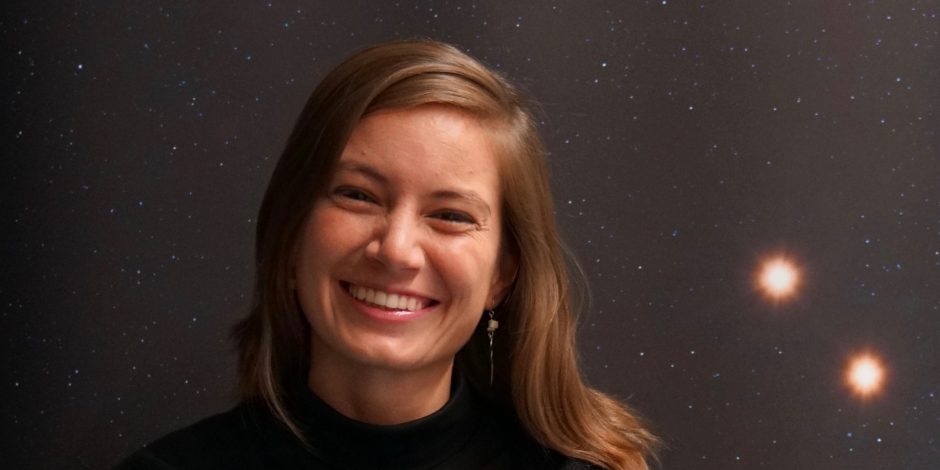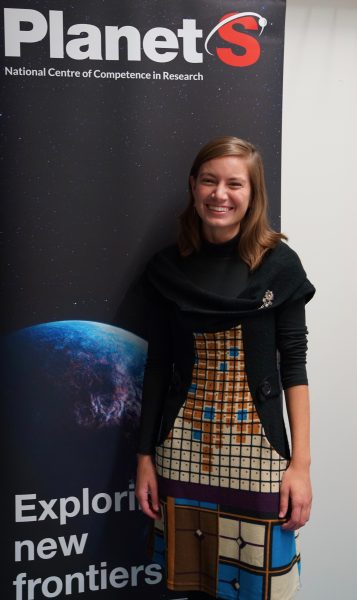Growing planets in the computer


Dr. Julia Venturini studies mini-Neptunes. (Photo: Sylviane Blum)
For her work about planet formation Julia Venturini received the prize for the best PhD in physics at the University of Bern. The PlanetS member calculated what happens when you add a new ingredient to the standard model of growing gaseous planets.
«For a long time, nothing was working,» remembers Julia Venturini. But finally the result of her painstaking endeavour over four years was so convincing that her PhD was awarded with the grade 6.0 by both the external reviewer and the thesis advisors. During a ceremony on 28 February 2017 at the Kultur Casino Bern, Julia Venturini received the prize for the best doctoral thesis in physics at the University of Bern.
«I make planets in my computer,» explains the 28 year old researcher who was born in Uruguay: «I put some rocky core, I let the planet accrete some hydrogen, some helium and some other ‘heavy elements’ and voilà, I get (sometimes) a giant planet.» Julia Venturini’s speciality are the ‘heavy elements’ – new ingredients to the standard model of planet formation. Although they were thought to be important, nobody had added them before to the planetary atmosphere in a fully consistent way.
In the standard model of planet formation, a moon-size embryo grows by accreting solids (ices and rocks) and gas (basically hydrogen and helium) from the disk that rotates around the central star. The standard model assumes that all the solids sink to the core whereas the hydrogen and helium remain on the top, forming the primordial atmosphere or envelope of the planet. But in reality, when the mass of the protoplanet is a few Earth masses, the temperatures in the deep atmosphere can be so high that the solids vaporise when crossing the atmosphere, like meteoroids when crossing Earth’s atmosphere. In particular, icy material is expected to sublimate and remain well mixed in the envelope.
Gas giants grow faster
By this process, the composition of the atmosphere of the planet gets enriched in compounds heavier than hydrogen and helium called «metals» in astronomy. This has important implications: «I found that the timescale to form a gas giant like Jupiter can be considerably reduced from 10 to 2 million years,» summarizes Julia Venturini. This happens mainly because by enhancing its self-gravity, the envelope can contract faster and leave space to accrete more gas.
An even more surprising result was to find that by including this effect, small mass planets with high amounts of hydrogen and helium (around 20% in mass) can be formed. «We now call these objects ‘mini-Neptunes’,» explains Julia Venturini. After her PhD she keeps on studying the formation of this kind of planets adding more realistic models for the accretion of solids. As postdoc she is now working at the University of Zurich. «I am planning to work on other planetary subjects too, like atmospheres of exoplanets or interiors of giant planets of the the Solar System», the award-winning researcher explains.
More about Dr. Julia Venturini: http://nccr-planets.ch/team/venturini-julia/
Categories: News
